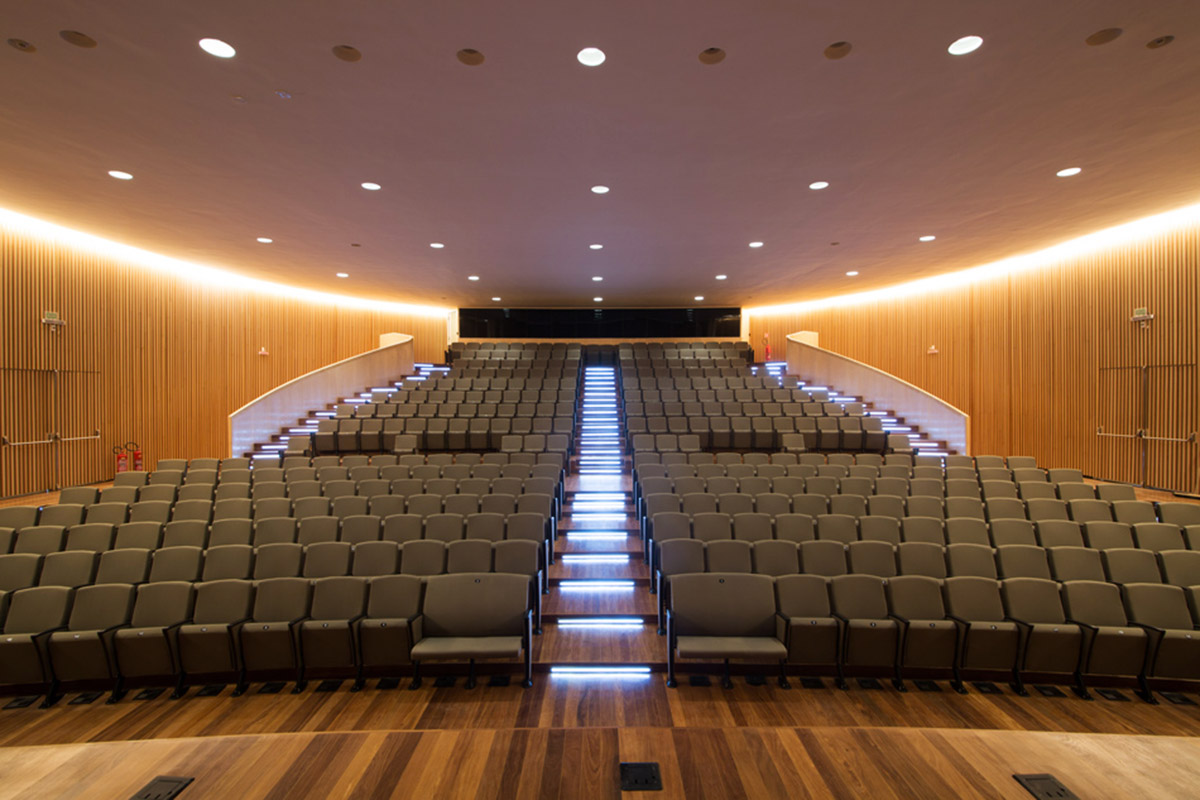Submitted by WA Contents
Santiago Calatrava’s Museum of Tomorrow opened in Rio de Janeiro
Brazil Architecture News - Dec 25, 2015 - 18:31 11092 views
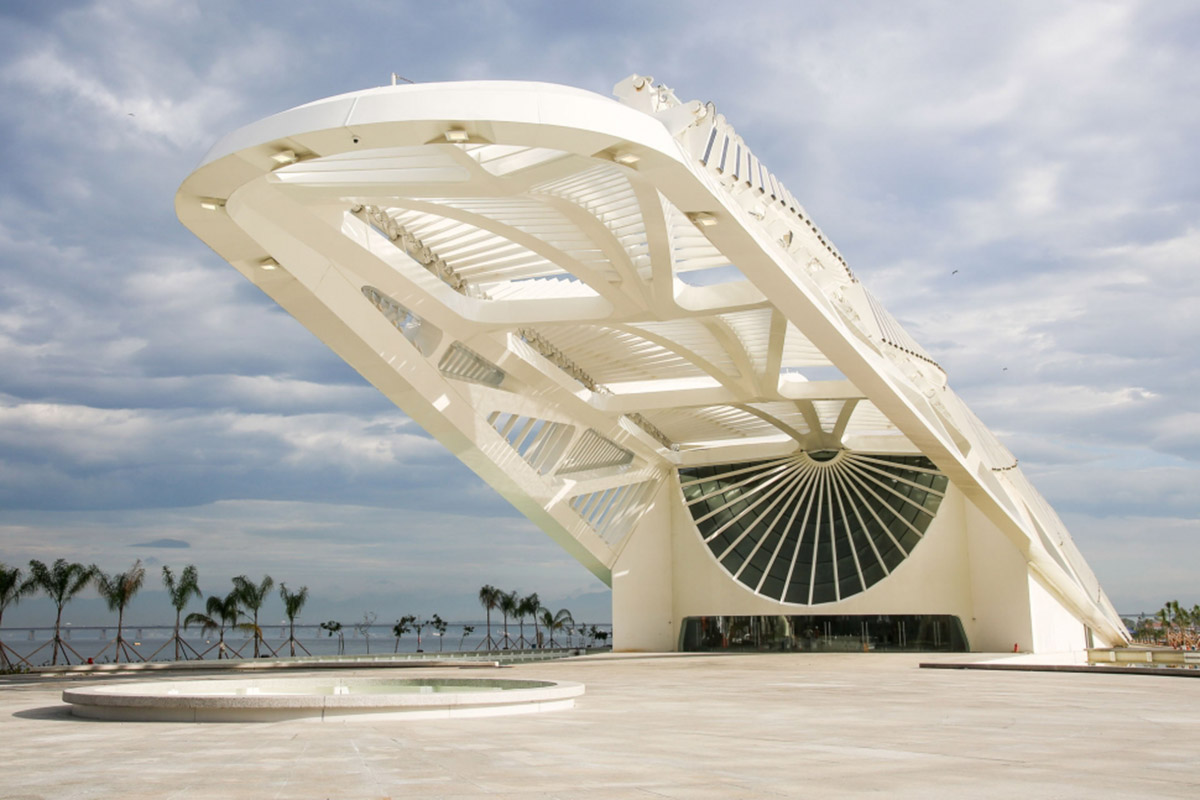
image © Bernard Lessa
The Spanish architect Santiago Calatrava's new museum The Museu do Amanhã / the museum of tomorrow opened in Rio de Janeiro, Brazil- and the museum welcomed more than 25,000 visitors on its first weekend. The project supports the revitalization of Rio’s Porto Maravilha neighborhood, Museu do Amanhã Focuses on Future of Planet. The building creates an innovative cultural space addressing the future of the planet, which is inspired by the Carioca culture and through its architecture, explores the relationship between the city and the natural environment.
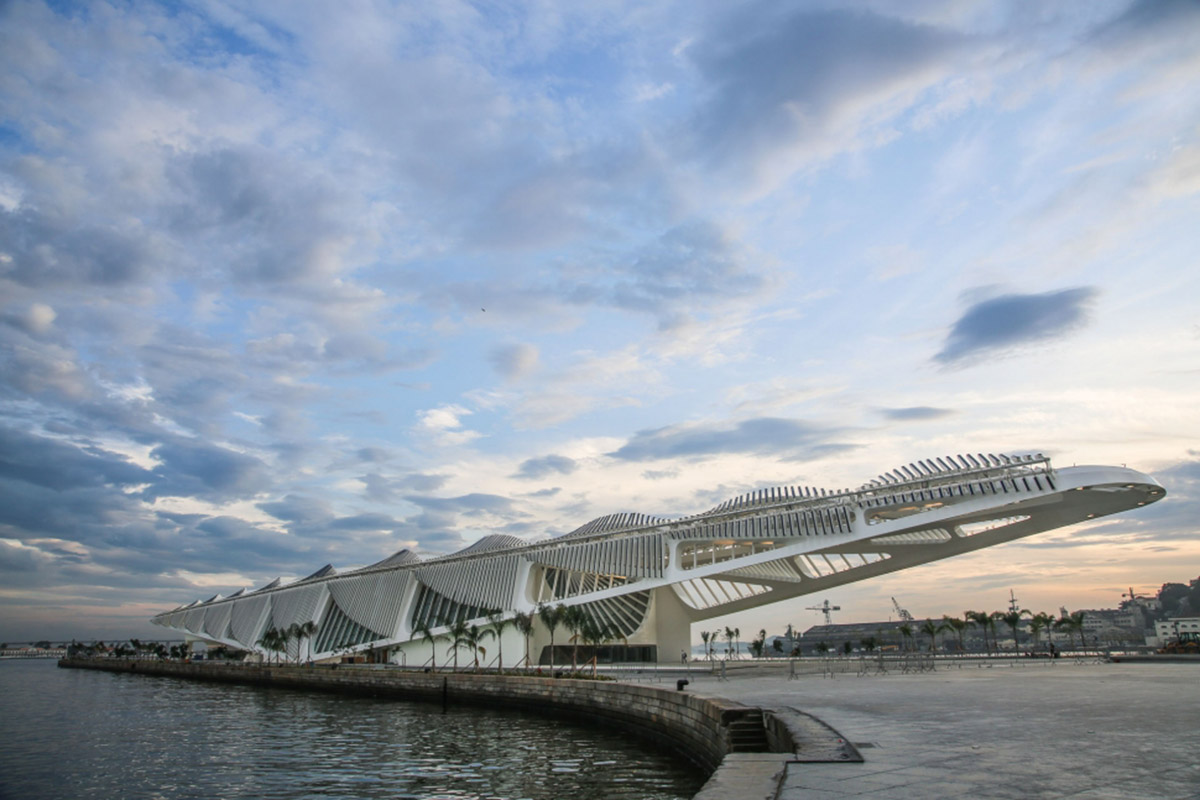
image © Bernard Lessa
This sculptural building includes 5,000 square meters of temporary and permanent exhibition space, as well as a 7,600 square meter plaza that wraps around the structure and extends along the dock. The building features large overhangs 75 meters in length on the side facing the square and 45 meters in length on the side facing the sea. These features highlight the extension of the Museum from the dock into the bay.
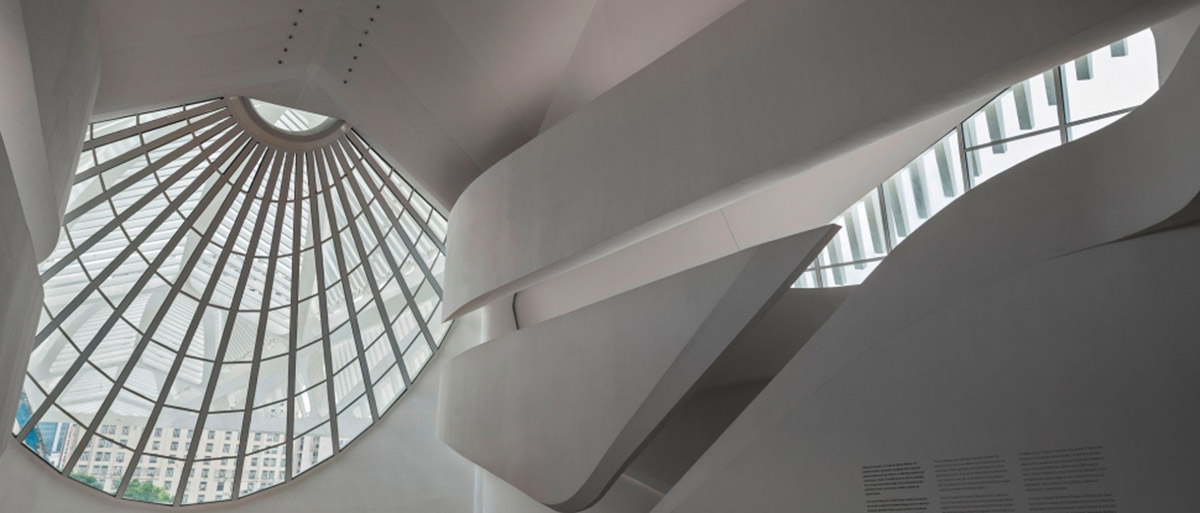
image © Cesar Barreto
The permanent exhibition is housed upstairs, and features a roof 10 meters high with panoramic views of Guanabara Bay. The total height of the building is limited to 18 meters, which protects the view from the bay of Sao Bento Monastery, a UNESCO World Heritage Site.
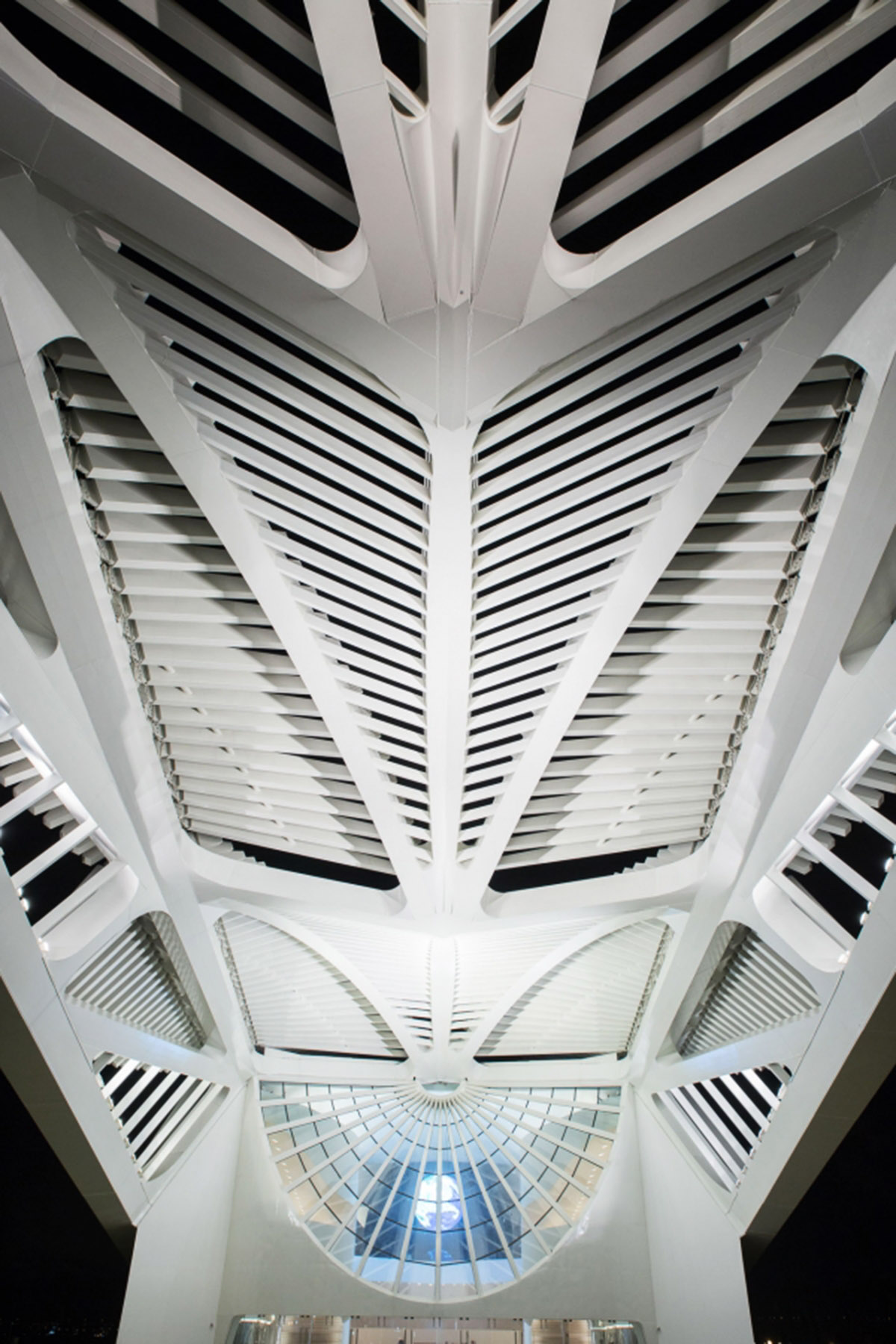
image © Thales Leite
"The city of Rio de Janeiro is setting an example to the world of how to recover quality urban spaces through drastic intervention and the creation of cultural facilities such as the Museum of Tomorrow and the new Museum of Art,” said Santiago Calatrava. "This vision led us, in our first designs, to propose the addition of a plaza outside the Museum. The plaza creates a more cohesive urban space and reflects the neighborhood’s greater transformation.”
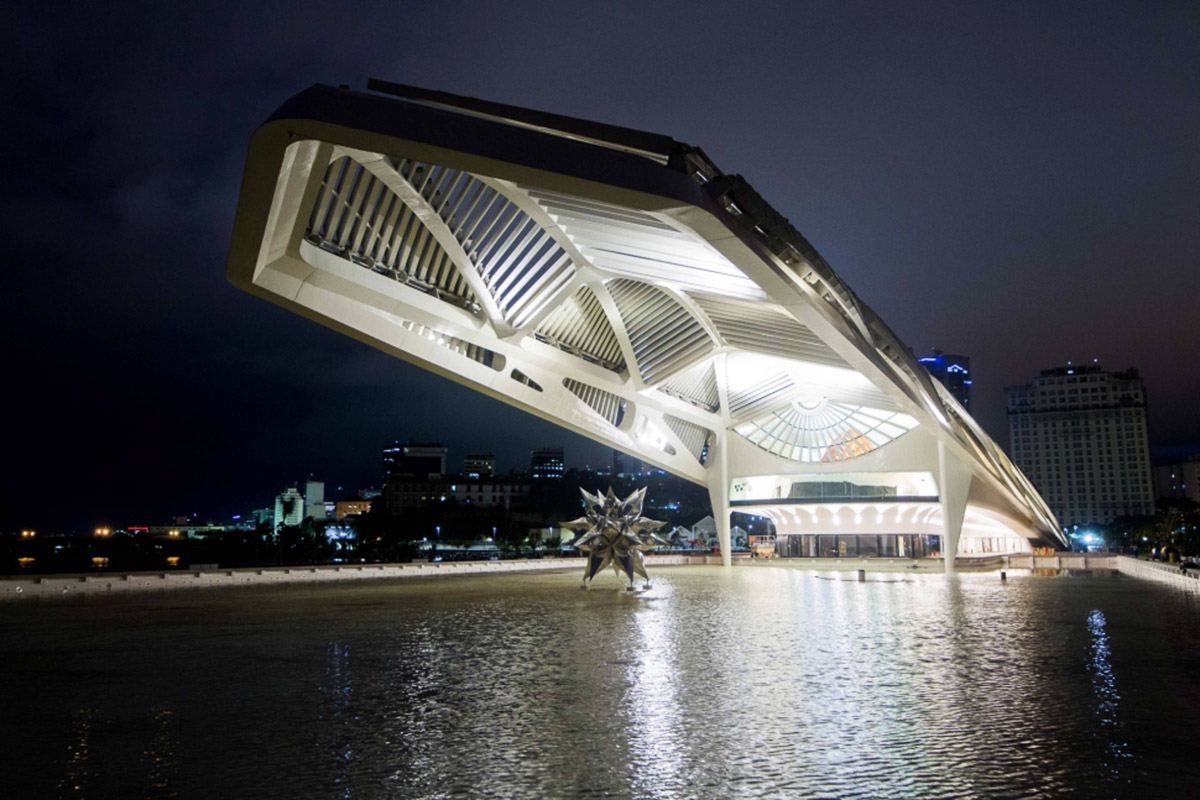
image © Thales Leite
The cantilevering roof with its large mobile wings and the facade structure expand almost the full length of the pier emphasizing the extension into the Guanabara Bay, while minimizing the building's width. A reflection pool surrounding the building on the outside—used to filter water that is being pumped from the bay and released back in from the end of the pier— gives visitors the impression that the Museum is floating.
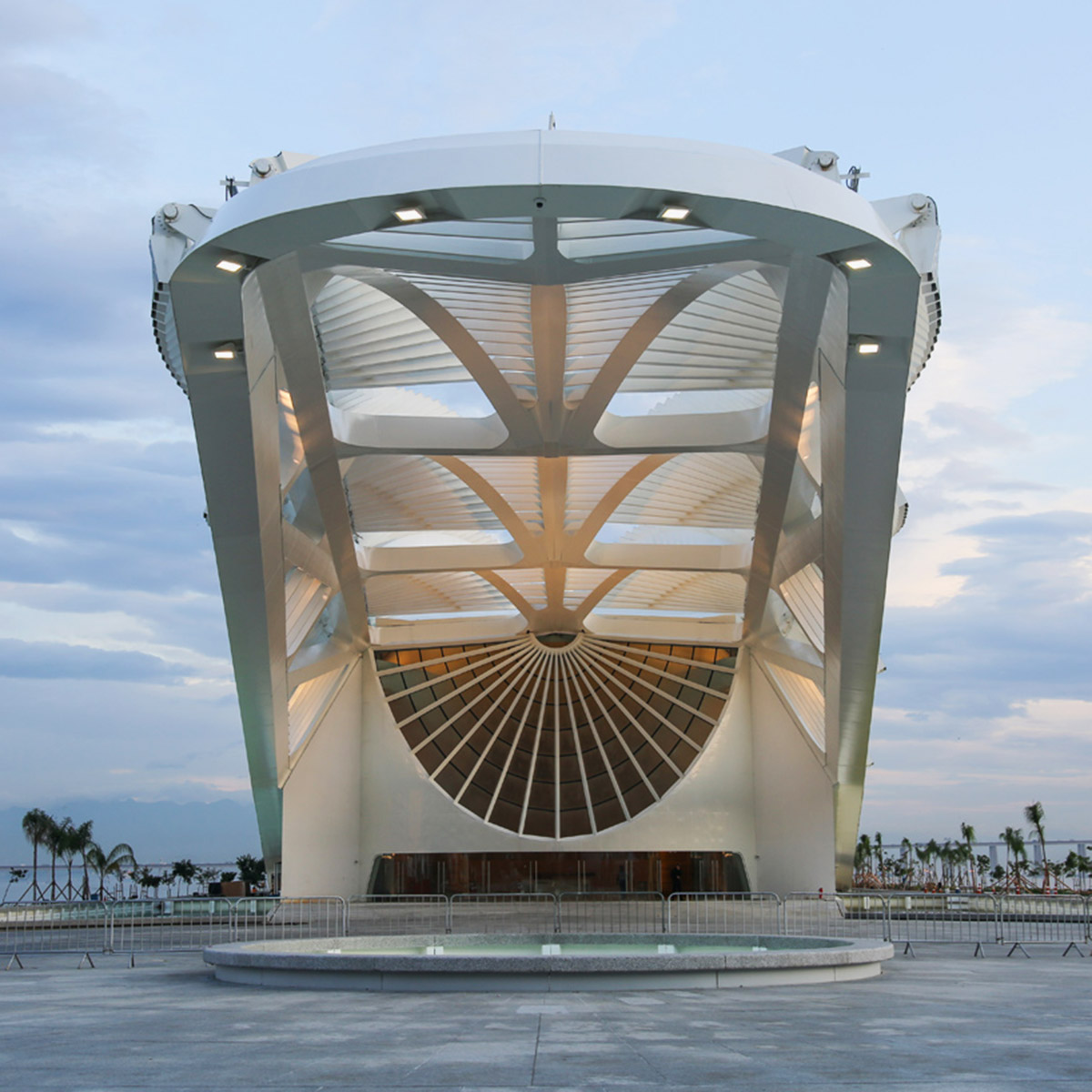
image © Bernard Lessa
"The idea is that the building feels ethereal, almost floating on the sea, like a ship, a bird or a plant. Because of the changing nature of the exhibits, we have introduced an archetypal structure inside the building. This simplicity allows for the functional versatility of the Museum, able to accommodate conferences or act as a research space," said Mr. Calatrava.

image © Bernard Lessa
The building is orientated in the north-south direction, off-center from the pier's longitudinal east-west axis, maximizing a continuous landscaping feature containing beautiful gardens, paths and leisure areas along the southern length of the pier. A park walkway around the perimeter of the pier will allow visitors to circumnavigate the Museum, while enjoying panoramic views of the Sao Bento Monastery and the Guanabara Bay. The lower level contains functional and technical rooms, such as the Museum's administrative offices, educational facilities, research space, an auditorium, a museum store, a restaurant, lobby, archives, storage and a delivery area.

image © Cesar Barreto
Located on the Maua Pier, the Museum of Tomorrow is part of a larger revitalization of Porto Maravilha, the port neighborhood in Rio de Janeiro. The project allows for better integration between the Port District and the city center and is helping to make this area one of the most attractive neighborhoods in the city. The building "is the result of a consistent dialogue. The building was built to be a museum for the future, and an educational unit," said Mr. Calatrava.

image © Thales Leite
The building features sustainable design, incorporating natural energy and light sources. Water from the bay is used to regulate the temperature inside the building; this source also supplies water for the Museum’s surrounding reflecting pools. The museum also uses photovoltaic solar panels, which can be adjusted to optimize the angle of the sun's rays throughout the day and generate solar energy to supply the building. The visionary museum is focused on answering five key questions: Where did we come from? Who are we? Where are we? Where are we going? And how do we want to live together over the next fifty years?
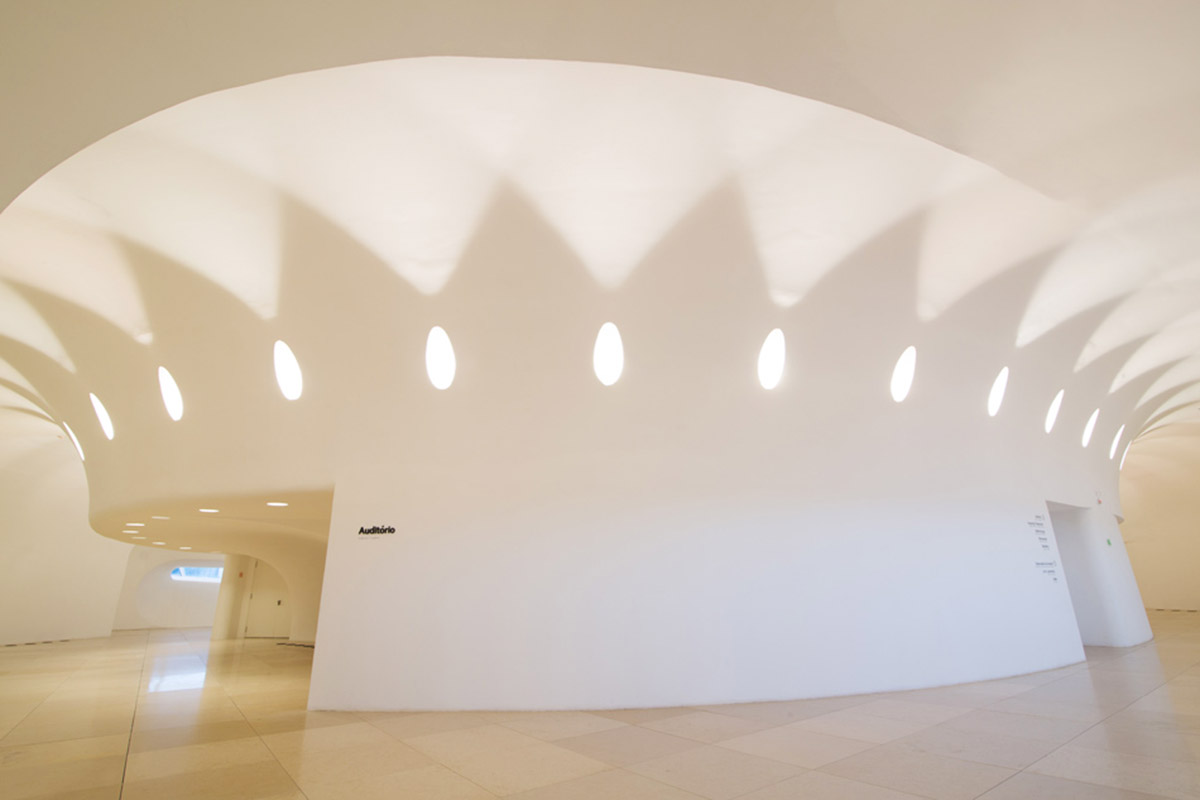
image © Thales Leite
The Museum’s exhibits will address issues including population growth and increased life expectancy, consumption patterns, climate change, genetic engineering and bioethics, the distribution of wealth, technological advances and changes in biodiversity. The permanent exhibition is curated by physicist and cosmologist Luiz Alberto Oliveira and designed by Ralph Appelbaum, with the artistic direction of Andres Clerici.
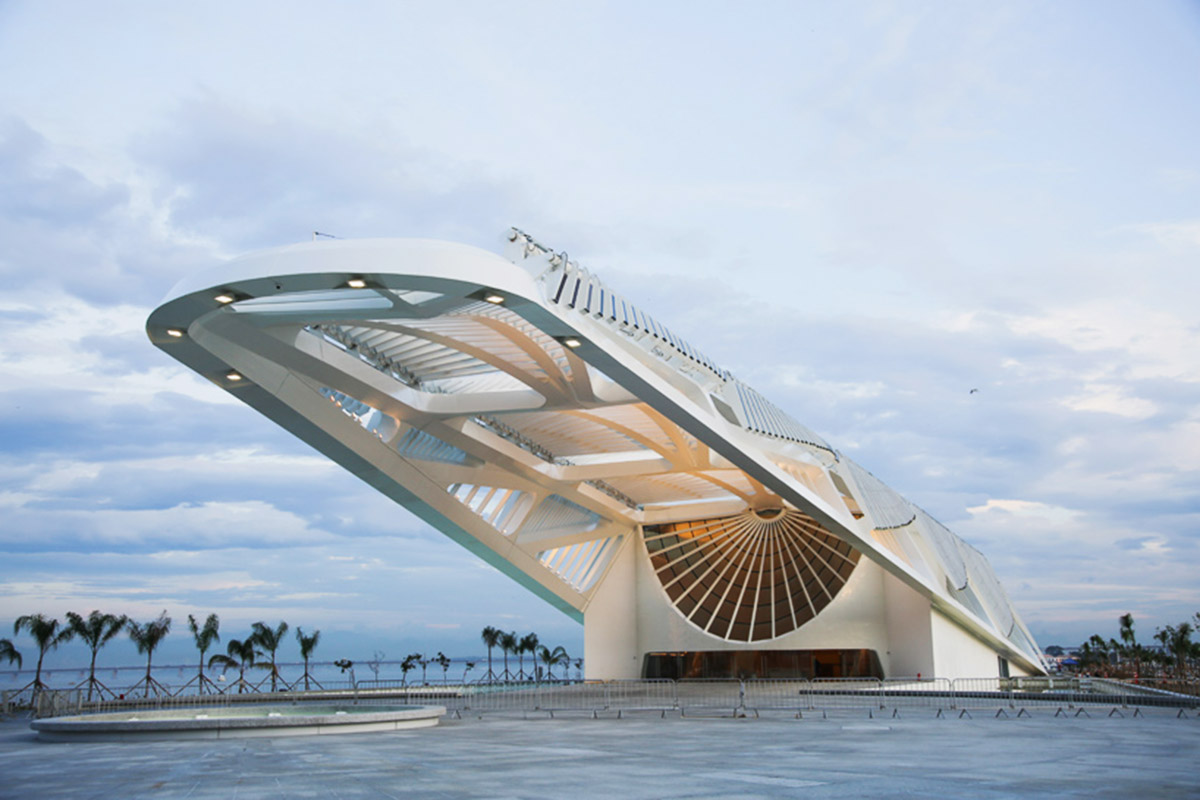
image © Bernard Lessa
In addition to the main exhibition area, the museum has space for temporary exhibitions, a 400-seat auditorium, a cafe, a restaurant and a gift shop. The museum will also host the Exploration Lab of Tomorrow, a space for educational activities and sample projects and prototypes. The Observatory of Tomorrow will provide a space for technological and scientific research, which may be integrated into the Museum exhibitions.

image © Thales Leite
The Museum of Tomorrow is made possible by the City of Rio de Janeiro and the Roberto Marinho Foundation, with the sponsorship of Banco Santander Brasil and the BG project. The project is supported by the Government of Brazil, through the Ministry of Environment and the Financier of Studies and Projects (FINEP).
